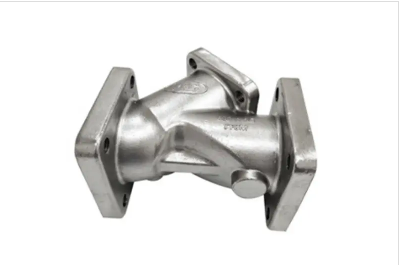Mobile:+86-311-808-126-83
Email:info@ydcastings.com
High-Quality 304 Stainless Steel Casting for Durable Industrial Applications
The Advantages and Applications of 304 Stainless Steel Casting
304 stainless steel is one of the most commonly used types of stainless steel in various industries due to its unique properties, versatility, and corrosion resistance. It belongs to the austenitic family of stainless steels, which makes it suitable for a wide range of applications, especially in casting. This article will explore the characteristics, advantages, and applications of 304 stainless steel casting.
Characteristics of 304 Stainless Steel
304 stainless steel is primarily composed of chromium (approximately 18%) and nickel (approximately 8%), which provides excellent corrosion resistance and improved strength at high temperatures. This alloying composition contributes to its remarkable mechanical properties, including good weldability, formability, and toughness. Unlike other steels, 304 stainless steel does not become brittle when exposed to low temperatures, making it ideal for various environmental conditions.
One key benefit of 304 stainless steel is its resistance to oxidation and scaling at temperatures up to 870°C (1600°F). These properties make it highly suitable for applications subjected to heat and pressure. Additionally, 304 stainless steel is non-magnetic, which is vital for certain applications in sensitive electronic and medical equipment.
Advantages of 304 Stainless Steel Casting
Casting is a manufacturing process where liquid material is poured into a mold to form a specific shape once it cools and solidifies. When it comes to casting 304 stainless steel, several advantages emerge
1. Complex Shapes One of the main benefits of casting is its ability to produce complex shapes that may be difficult or impossible to machine. The fluidity of molten 304 stainless steel allows for intricate designs, making it suitable for parts that require precise dimensions.
2. Cost-Effectiveness When mass production is required, stainless steel casting can be more economical compared to other fabrication methods, especially for large components or components with complex geometries. The ability to create multiple units from a single mold reduces labor and material costs.
3. Durability Cast 304 stainless steel components exhibit exceptional durability and resistance to wear and tear. This robustness makes them ideal for high-stress applications where components are subject to heavy usage and harsh environments.
4. Corrosion Resistance As mentioned earlier, 304 stainless steel is highly resistant to corrosion. This resistance is crucial in industries such as food processing, pharmaceuticals, and marine applications, where exposure to chemicals or saline environments can lead to rapid degradation of materials.
304 stainless steel casting

5. Versatility 304 stainless steel castings can be used in various sectors, including automotive, aerospace, chemical processing, and construction. Their adaptability to diverse applications enhances their utility and appeal across industries.
Applications of 304 Stainless Steel Casting
The widespread use of 304 stainless steel casting is reflected in numerous applications. Some notable examples include
- Food and Beverage Industry Components such as valves, pumps, and fittings made from 304 stainless steel are essential in food processing plants due to their non-reactive properties and ease of cleaning. Hygiene is paramount in this industry, and 304 stainless steel meets these stringent requirements.
- Chemical Processing In environments where corrosive chemicals are handled, 304 stainless steel is an excellent choice due to its superior resistance to oxidation and pitting. It is commonly used for tanks, reactors, and piping systems in chemical plants.
- Pharmaceuticals Ensuring product integrity and safety is crucial in the pharmaceutical industry. 304 stainless steel castings are used in manufacturing equipment, containers, and other critical components due to their smooth finish and resistance to contamination.
- Marine Applications The marine industry often encounters harsh conditions, including exposure to saltwater. 304 stainless steel is commonly used in boat fittings, hardware, and other components that require durability and resistance to corrosion.
- Architectural Elements The aesthetic appeal of 304 stainless steel makes it a popular choice for architectural elements, including railings, cladding, and decorative features. Its ability to withstand weathering while maintaining its appearance is a significant advantage.
Conclusion
In summary, 304 stainless steel casting offers numerous advantages, including complex shape formation, cost-effectiveness, durability, and resistance to corrosion. Its diverse applications across various industries, particularly in food processing, chemical processing, pharmaceuticals, marine environments, and architecture, showcase its importance. As industries continue to demand high-performance materials, 304 stainless steel casting will undoubtedly play a pivotal role in meeting these evolving needs.
-
Why Should You Invest in Superior Pump Castings for Your Equipment?NewsJun.09,2025
-
Unlock Performance Potential with Stainless Impellers and Aluminum End CapsNewsJun.09,2025
-
Revolutionize Your Machinery with Superior Cast Iron and Aluminum ComponentsNewsJun.09,2025
-
Revolutionize Fluid Dynamics with Premium Pump ComponentsNewsJun.09,2025
-
Optimizing Industrial Systems with Essential Valve ComponentsNewsJun.09,2025
-
Elevate Grid Efficiency with High-Precision Power CastingsNewsJun.09,2025











